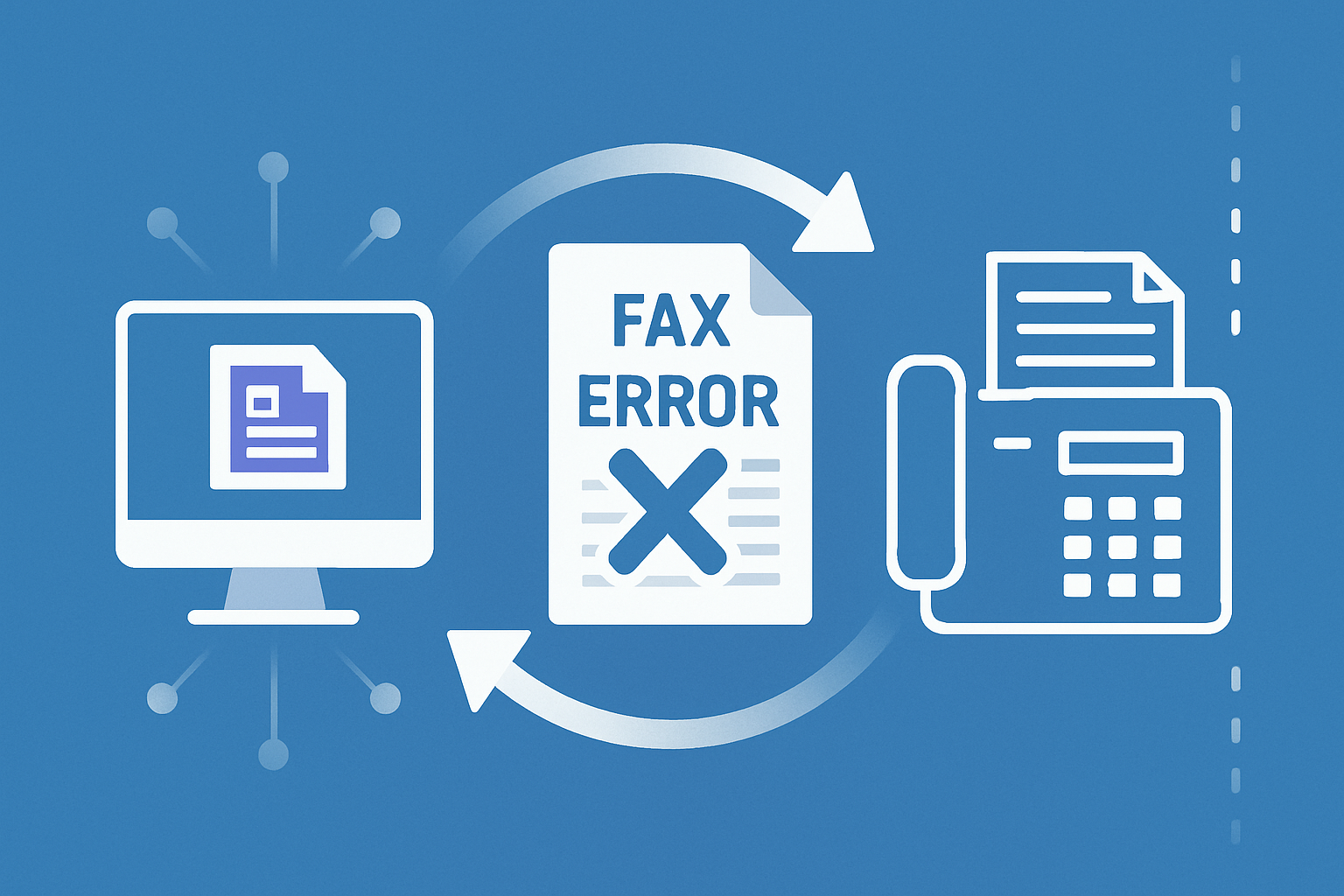

Eliminating Fax Transmission Errors With Automated Rerouting
by
Paperless Productivity
Fax transmission errors plague industries like healthcare, finance, and government, jeopardizing compliance as well as patient, client, or stakeholder satisfaction. Manual monitoring and re-sending faxes are laborious and costly while failing to address the root of the issue. Plus, some faxes may repeatedly fail transmission.
These issues are common, frustrating, and highly disruptive. But they’re also avoidable.
Private Fax Cloud® provides self-healing fax transmission solutions. In fact, we rarely ever see transmission errors following a Private Fax Cloud implementation using our self-healing fax transmission solution approach. You have to see it to believe it.
The key is to control how the fax solution responds to the countless factors that inevitably jeopardize transmission. An intelligent, automated algorithm works around errors quickly and transparently through a multitude of methods, ultimately eliminating 99.9% of transmission errors automatically, while the other 0.1% of transmission errors are resolved through an email submission to our Help Desk. You will literally see all of your faxes successfully received and sent.
Understanding Fax Transmission Errors
Each phase in a fax call is prone to certain issues. There’s also a possibility of more general, system-level issues at any point. Conceptually, you might group them as follows:
1. Before connecting
The sender was not able to connect to the recipient in the first place. Causes range from common sense (like a busy signal or human answering) to more technical telephony issues.
Common messages:
- No answer at fax number
- Fax number busy
- Human answered
- Invalid number / unallocated number
- Line disconnected / not in service
- Call rejected (e.g., SIP 603)
- Special information tone detected
- Call failed / network congestion
- Carrier timeout / no route available
- PBX misconfiguration (e.g., call never routed to fax device)
2. After the connection picks up (“phase B” errors)
The sender connected with the recipient, but wasn’t able to continue the transmission.
Common messages:
- Receive failure (phase B)
- No CED (Called Station Identification) tone received
- No DIS (Digital Identification Signal) received
- Unsupported or mismatched fax parameters (resolution, ECM, modulation)
- Timeout waiting for NSF/CSI/DIS signals
- Modulation negotiation failure (e.g., fallback from V.34 to V.17 fails)
- Incompatible ECM (Error Correction Mode) settings
- Fax protocol mismatch (e.g., T.38 vs. G.711 issues)
3. While transmitting pages
The sender and recipient have started the transmission, but the data itself isn’t complete or correct.
Common messages:
- Receive failure (phase B) could occur mid-transmission
- Line noise / signal interference during transmission
- Partial page sent or received
- Unexpected DCN (Disconnect) or interruption mid-transfer
- Page error: CRC failure or bad frames (especially under ECM)
- V.34 handshake timeout
- T.38 packet loss or jitter causing page drops
- Carrier signal lost mid-transmission
- Fax modem buffer overflow
- Dropped transmission due to low SIP jitter buffer
4. While ending the connection
The transmission ended prematurely, or the transmission succeeded but wasn’t properly confirmed.
Common messages:
- DCN not received
- Premature disconnect by sender or receiver
- End-of-message confirmation not acknowledged
- Session timed out during post-page confirmation
- Protocol error on final command exchange
This list is not exhaustive and may not reflect how your fax environment logs errors. Contact us for assistance with product-specific error codes, or to help you resolve transmission errors once and for all.
